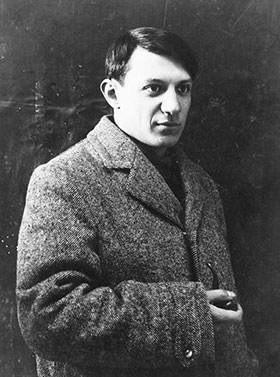- Overview
-
Rembrandt was a Dutch draughtsman, painter, and printmaker. An innovative and prolific master in three media,[3] he is generally considered one of the greatest visual artists in the history of art and the most important in Dutch art history. Unlike most Dutch masters of the 17th century, Rembrandt's works depict a wide range of style and subject matter, from portraits and self-portraits to landscapes, genre scenes, allegorical and historical scenes, biblical and mythological themes as well as animal studies. His contributions to art came in a period of great wealth and cultural achievement that historians call the Dutch Golden Age, when Dutch art (especially Dutch painting), although in many ways antithetical to the Baroque style that dominated Europe, was extremely prolific and innovative, and gave rise to important new genres. Like many artists of the Dutch Golden Age, such as Jan Vermeer of Delft, Rembrandt was also known as an avid art collector and dealer.
- Career
-
- After completing his training, Rembrandt became a professional artist and opened a studio in Leiden in the mid-1620s with the help of a friend and fellow painter, Jan Lievens. He began experimenting with etchings and started painting biblical scenes.
- He developed his own unique style of painting light and illumination that made him very famous. His paintings ‘Peter and Paul Disputing’ (1628) and ‘Judas Repentant and Returning the Pieces of Silver’ (1629) are some of the paintings which display his ingenuity in handling the concept of light.
- Rembrandt achieved considerable success within a few years of becoming a professional painter and this attracted numerous aspiring painters to his studio who were eager to be trained by the great master. In the late 1620s he began accepting students and Gerrit Dou was one of his early pupils.
- Buoyed by his success, Rembrandt moved to Amsterdam in 1631 in order to expand his business. He initially stayed with an art dealer, Hendrick van Uylenburgh, who had a workshop that created portraits and restored paintings. During this time Rembrandt began working as a portraitist for the first time and was praised for the realism in his portraits.
- During the 1630s he also began painting dramatic biblical and mythological scenes in large format. Some of his works from this period include ‘The Blinding of Samson’ (1636), ‘Belshazzar's Feast’ (c. 1635), and ‘Danaë’ (1636).
- His style underwent a significant change in the 1640s. His paintings now became less dramatic and more sober in tone. The 1640s also marked a tragic period in his personal life which might have been the reason behind his changed style of painting. During this difficult period he painted several biblical scenes from the New Testament than the Old Testament.
- The 1650s saw more changes in his style of art. He took to painting with more vibrant hues and bolder brushstrokes. His new style departed considerably from his older delicate style and became coarser. The biblical themes in his later paintings shifted to intimate portrait-like figures from the dramatic group scenes he once used to specialize in.
- After completing his training, Rembrandt became a professional artist and opened a studio in Leiden in the mid-1620s with the help of a friend and fellow painter, Jan Lievens. He began experimenting with etchings and started painting biblical scenes.
- Legacy
-
Rembrandt is renowned for his outstanding ability to render the human figure and its emotions. He also was unusually gifted as an artist; the way in which he handled his pen or chalk, the etching needle, or the brush betrays a great sensitivity and spontaneity, and the resulting works convey a sense of freedom and creativity. Rembrandt thought about and experimented with purely pictorial matters—the possibilities of composition; the role of tone and colour in the creation of pictorial space, light, shadow, and reflection; and how to vary the properties of his paint to obtain specific effects—with sharp intelligence and originality.
Rembrandt was an innovator in technique in all three of his media. From his early, colourful history paintings to his glowing late works, it is clear that he was an artist continuously in search of new stylistic modes of expression and that he belongs to that small category of artists whose development never ceased. Rembrandt’s evolution culminated in his remarkable late style, usually considered to be the summit of his art.
- On View
-
- National Gallery of Art East Building, Washington D.C.
- Los Angeles County Museum Of Art
- Rijksmuseum, Amsterdam
- Hermitgage Museum, Saint Petersburg
- Mauritshuis, The Hague
- The Louvre, Paris
- J. Paul Getty Museum, Los Angeles
- Minneapolis Institute of Art, Minneapolis
- Gemaldegalerie Alte Meister, Dresden
- Metropolitan museum of Art, New York City
- National Gallery, London
- British Museum, London
- Museo Nacional Del Prado, Madrid
- Royal Ontario Museum. Toronto
- Norton Simon Museum
- Art Institute of Chicago
- Art Gallery of Ontario, Toronto
- Hammer Museum
- Amsterdam Museum
- Stadel Museum, Frankfurt
















